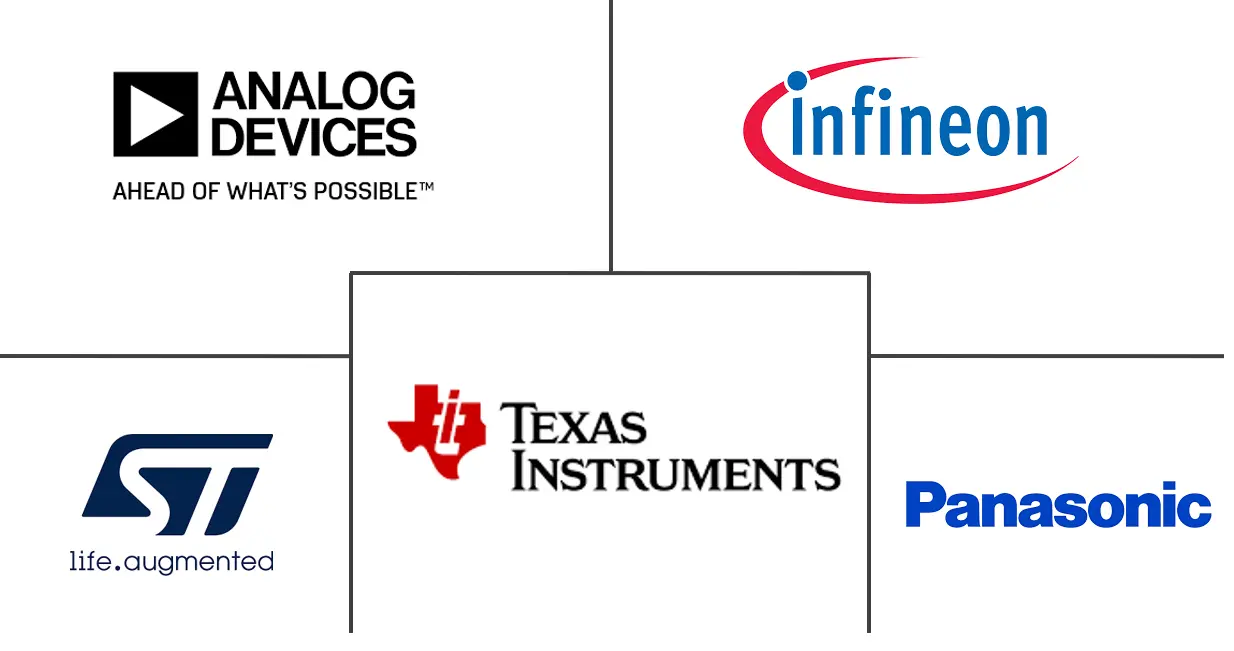Market Size of United States Wearable Sensors Industry

| Study Period | 2019 - 2029 |
| Base Year For Estimation | 2023 |
| Forecast Data Period | 2024 - 2029 |
| Historical Data Period | 2019 - 2022 |
| CAGR | 46.87 % |
| Market Concentration | Medium |
Major Players
*Disclaimer: Major Players sorted in no particular order |
US Wearable Sensors Market Analysis
The United States Wearable Sensors Market is expected to register a CAGR of 46.87% over the period 2024-2026. Wearable sensors are embedded in wearable devices to monitor bodily activities, which include blood pressure, body temperature, and heart rate, which is driving the healthcare industry as it enables remote data access.
- The market is driven due to the rising awareness of health and fitness, where wearable sensors play a vital role. Increasing demand across various application sectors such as wearable technology for fitness, healthcare, and security is driving the U.S. wearable sensors market to grow lucratively.
- The rising penetration of the internet and increasing expenditure on research by enterprises and industries in the region is driving the development of smart wearable technology for several applications. According to Cisco, in the United States, there are expected to be 317 million total Internet users (94% of the population) by 2022, up from 298 million (92% of the population) in 2017. Further, 23% of all networked devices are expected to be mobile-connected by 2022.
- During the COVID-19 outbreak, the demand for wearable devices' sensors that offer real-time data to frontline healthcare workers and let them quickly screen individuals with a high temperature skyrocketed.
- However, the ongoing chip shortage is expected to result in a decline in chip availability. As fewer products become available to buy, and with increasing demands, prices of wearable sensors and wearable sensor-based devices are expected to increase.
US Wearable Sensors Industry Segmentation
Report on the United States wearable sensors market gives comprehensive coverage of the market with analysis and segmentation with individual market share, size, and trends. The report also includes growth prospects, trends, and forecasts for the future.
| By Type | |
| Health Sensors | |
| Environmental Sensors | |
| MEMS Sensors | |
| Motion Sensors | |
| Others |
| By Device | |
| Wristwear | |
| Bodywear and Footwear | |
| Others |
| By Application | |
| Health and Wellness | |
| Safety Monitoring | |
| Home Rehabilitation | |
| Others |
United States Wearable Sensors Market Size Summary
The United States wearable sensors market is experiencing significant growth, driven by the increasing awareness of health and fitness and the rising demand for wearable technology across various sectors such as healthcare, fitness, and security. Wearable sensors, embedded in devices to monitor bodily activities like blood pressure, body temperature, and heart rate, are becoming integral to the healthcare industry by enabling remote data access. The proliferation of the internet and heightened research investments by enterprises are further propelling the development of smart wearable technology. The COVID-19 pandemic has also amplified the demand for these sensors, as they provide real-time data crucial for healthcare workers. However, challenges such as the ongoing chip shortage are expected to impact the availability and pricing of wearable sensor-based devices.
The sports and fitness sector is a major contributor to the wearable sensors market, with products like Nike Fuelband, Jawbone UP, Microsoft Band, and Fitbit gaining popularity due to the rising obesity rates in the region. Consumer perspectives towards wearable devices are evolving, with increasing interest in features and technology integration that enhance interaction with the environment. Factors such as age, income, and gender significantly influence the adoption of fitness trackers and smartwatches. The market is moderately fragmented, with major players like Apple Inc., Huawei Technologies Co. Ltd, and Samsung Electronics Co. Ltd continuously updating their offerings to maintain market share. Strategic acquisitions, such as Google's acquisition of Fitbit, and product launches, like Apple's smartwatch series, are expected to further drive market growth.
United States Wearable Sensors Market Size - Table of Contents
-
1. MARKET DYNAMICS
-
1.1 Market Overview
-
1.2 Industry Attractiveness - Porter's Five Force Analysis
-
1.2.1 Threat of New Entrants
-
1.2.2 Bargaining Power of Buyers
-
1.2.3 Bargaining Power of Suppliers
-
1.2.4 Threat of Substitute Products
-
1.2.5 Intensity of Competitive Rivalry
-
-
1.3 Market Drivers
-
1.4 Market Restraints
-
1.5 Industry Value Chain Analysis
-
1.6 Assessment of the Impact of COVID-19 on the Market
-
1.7 Technology Snapshot
-
1.7.1 Key technology overview (MEMS, CMOS, etc)
-
-
-
2. MARKET SEGMENTATION
-
2.1 By Type
-
2.1.1 Health Sensors
-
2.1.2 Environmental Sensors
-
2.1.3 MEMS Sensors
-
2.1.4 Motion Sensors
-
2.1.5 Others
-
-
2.2 By Device
-
2.2.1 Wristwear
-
2.2.2 Bodywear and Footwear
-
2.2.3 Others
-
-
2.3 By Application
-
2.3.1 Health and Wellness
-
2.3.2 Safety Monitoring
-
2.3.3 Home Rehabilitation
-
2.3.4 Others
-
-
United States Wearable Sensors Market Size FAQs
What is the current United States Wearable Sensors Market size?
The United States Wearable Sensors Market is projected to register a CAGR of 46.87% during the forecast period (2024-2029)
Who are the key players in United States Wearable Sensors Market?
STMicroelectronics, Infineon Technologies AG, Texas Instruments Incorporated//www.infineon.com/, Analog Devices, Inc. and Panasonic Corporation are the major companies operating in the United States Wearable Sensors Market.

